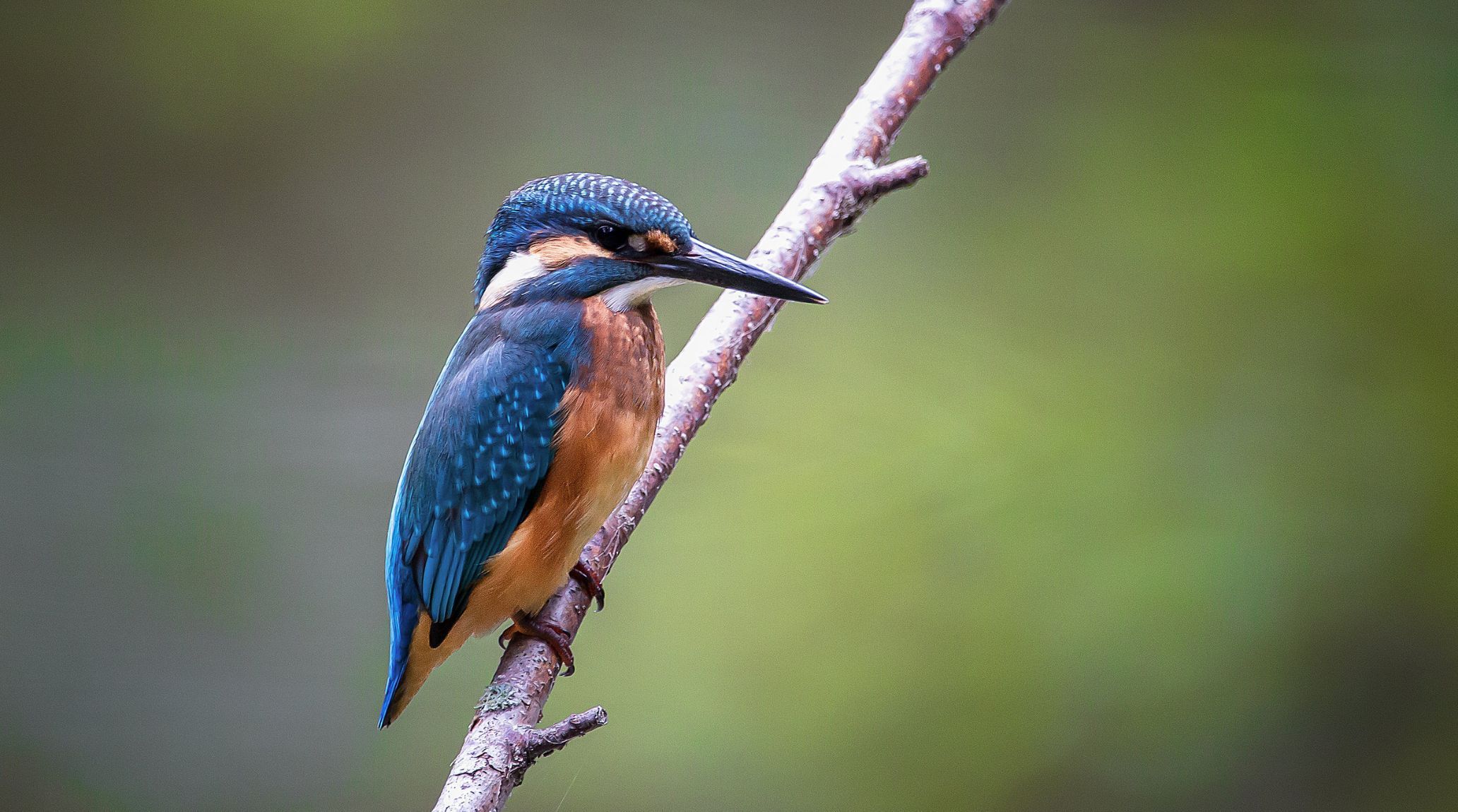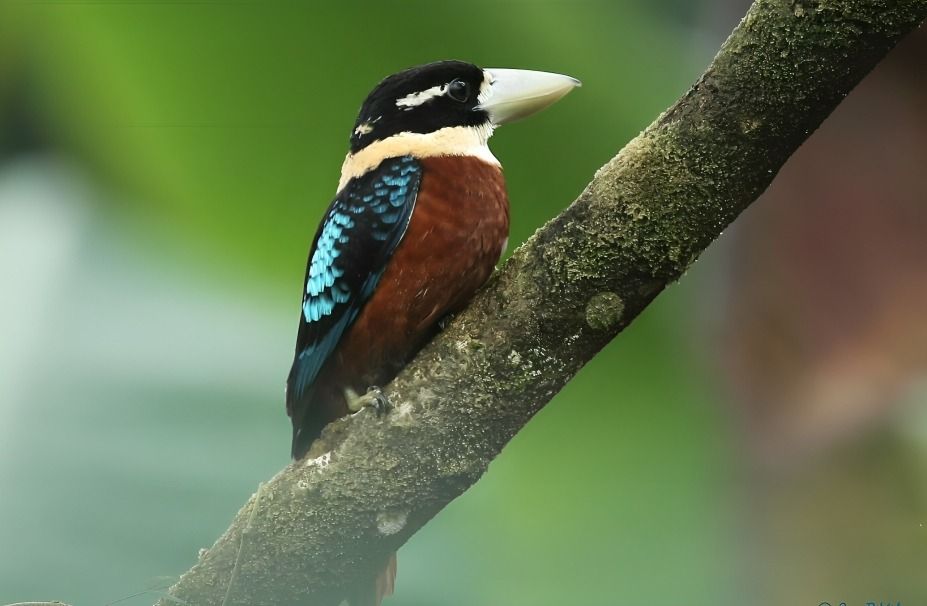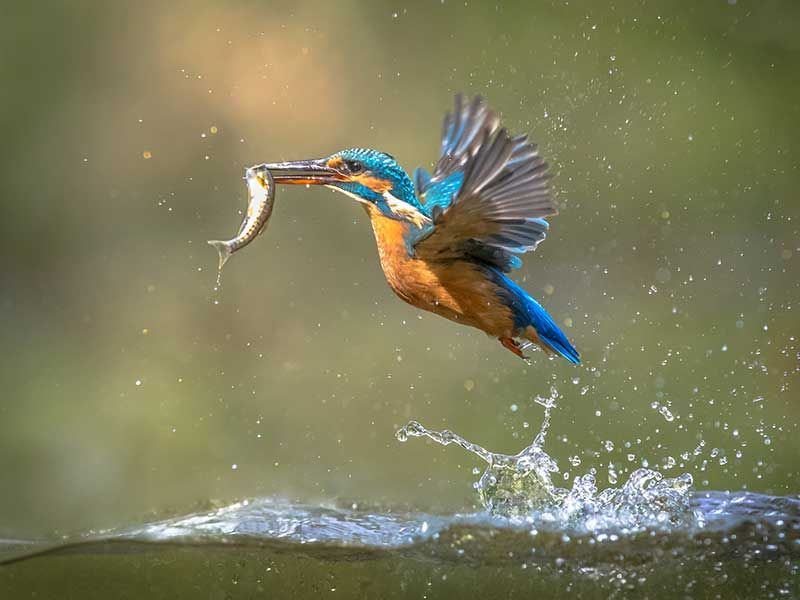
“
Kingfishers are nature's most captivating birds, known for their stunning plumage and exceptional hunting skills. These birds are found in various habitats worldwide, from lush tropical forests to arid deserts. Their vibrant colors and unique behaviors make them a favorite among bird watchers and nature enthusiasts. In this blog, we will explore 20 fascinating kingfisher facts that highlight their remarkable adaptations, intriguing lifestyles, and their critical roles in their ecosystems. 1
1
1
1
”
Kingfishers are territorial and generally avoid each other. They often compete for prime fishing spots and will defend their territory aggressively, with interactions between individuals typically limited to confrontations rather than socializing. 1
Kingfishers are expert fishers. They have keen eyesight that allows them to spot fish from high above the water. Once they spot their prey, they dive headfirst with incredible speed and precision to catch it with their sharp beaks. 2
Unlike many birds that build nests in trees, kingfishers dig burrows into riverbanks or sandbanks. These tunnels can be quite long, providing a safe and hidden place for their eggs and chicks. 3
Kingfishers can dive at speeds of up to 40 kilometers per hour (about 25 miles per hour). Their bodies are streamlined, and their wings are specially adapted to help them slice through the water without making a splash. 4

The laughing kookaburra, the largest kingfisher species, is known as the "bushman's alarm clock" for its iconic dawn calls and can reach up to 42 cm (1 ft 4 in) in length, weighing around 465 grams (1 lb).
While fish is their primary food, kingfishers also eat insects, crustaceans, and small amphibians. This varied diet helps them survive in different environments and seasons when certain prey might be scarce. 5
They hover above water like a helicopter, then dive sharply to snatch their prey. This technique demands precise control and significant energy. Their eyes have a unique structure, allowing them to see clearly both in the air and underwater. 6
There are over 90 different species of kingfishers found around the world. Each species has adapted to its environment, from tropical forests to arid deserts, showcasing the incredible versatility of these birds. 7
Kingfisher chicks have fluorescent tips on their beaks, which glow in the dark. This adaptation helps their parents easily locate them in their nests during low-light conditions, ensuring they can feed and care for their young effectively. 8

On the other end of the scale, the African dwarf kingfisher, the smallest of the kingfishers, measures just 10 cm (3.9 in) and weighs a mere 12 grams (0.42 oz), making it a tiny marvel of the bird world.
Kingfishers typically have a lifespan of 2 to 7 years in the wild, though some may live up to 10 years. Their lifespan can vary depending on species, environmental conditions, and predation risks, with some living longer in protected areas. 9
Many kingfisher species form monogamous pairs, meaning they mate with one partner for life. They work together to dig burrows, incubate eggs, and feed their chicks, demonstrating strong family bonds. 10
The beaks of kingfishers are key to distinguishing between males and females. Males typically have brighter, more vibrant beaks, while females possess beaks with more subdued colors. This difference helps in identifying the sexes of these striking birds. 11
Kingfisher eggs are white and round, often laid in the dark tunnels of their burrows. The color and shape help protect them from predators and keep them hidden until they hatch.12
Although they are not aquatic birds, kingfishers can swim short distances underwater to catch fish. They use their wings to propel themselves, which is quite a sight to see. 13
Kingfisher chicks grow very quickly. Within a few weeks, they go from being tiny, helpless hatchlings to skilled young hunters ready to leave the nest and fend for themselves. 14
Kingfishers live in a variety of habitats, from dense forests to open savannas. They are commonly found near water bodies like rivers, lakes, and coastlines, where they can easily hunt for fish. 15

Kingfishers have long, sharp beaks that are perfectly designed for catching fish. The shape and strength of their beaks allow them to pierce through the water and snatch their slippery prey with ease.
The stork-billed kingfisher, Myanmar's national bird, is celebrated for its vivid colors and distinctive long bill. It represents the nation's rich wildlife and natural beauty. This kingfisher is an integral part of Myanmar's avian heritage. 16
Kingfishers inspired the design of Japanese bullet trains. The streamlined shape of their beaks, which allows them to dive into water with minimal splash, influenced the train's aerodynamic design, improving speed and reducing noise in the process. 17


